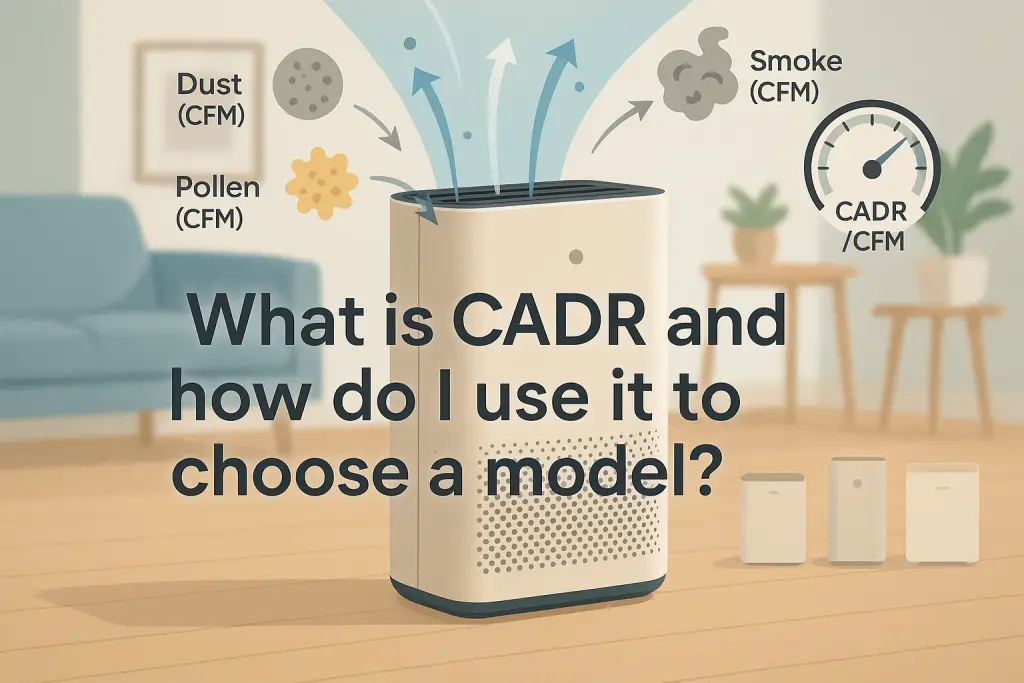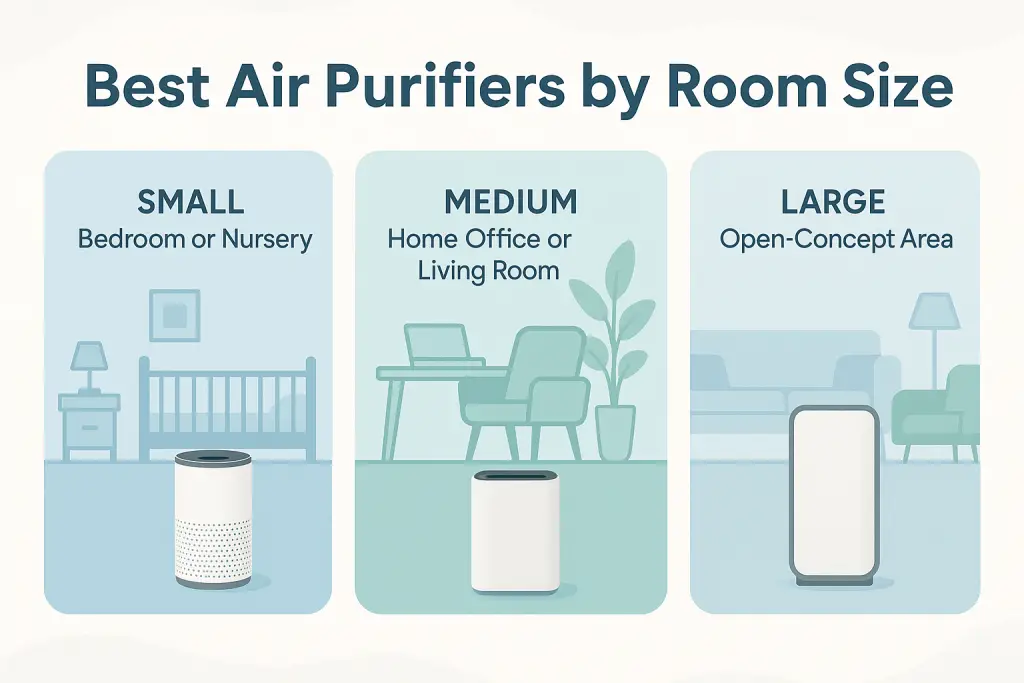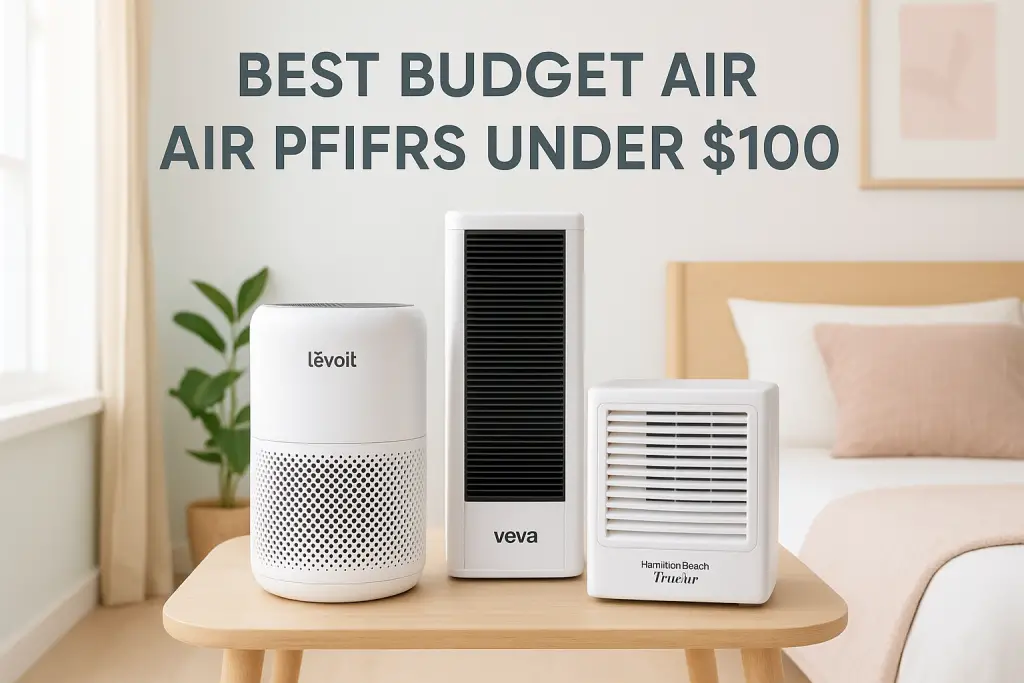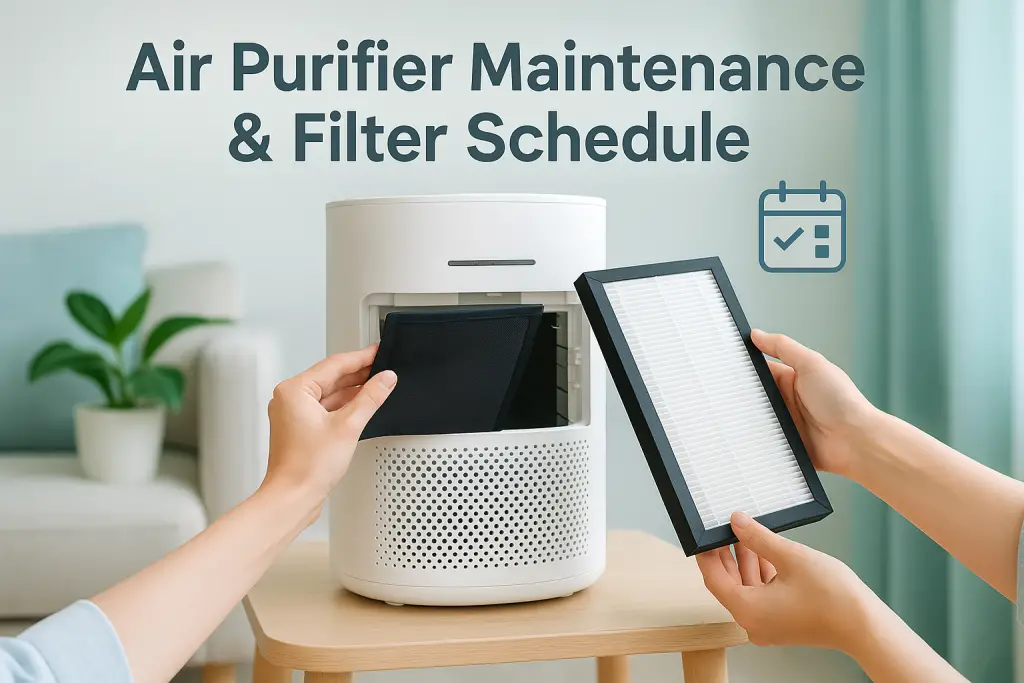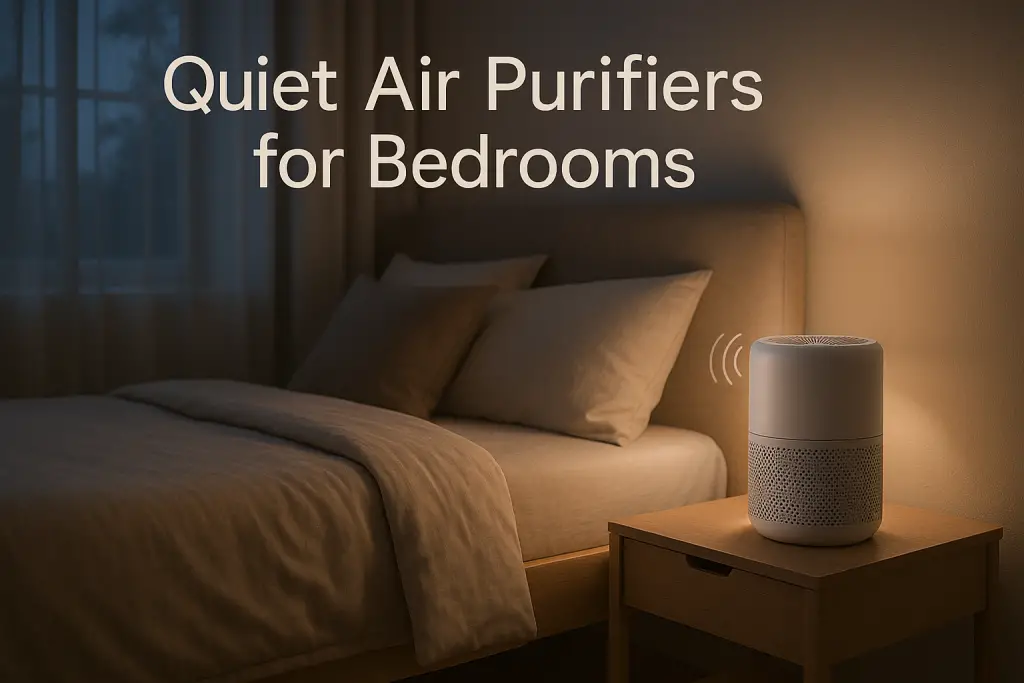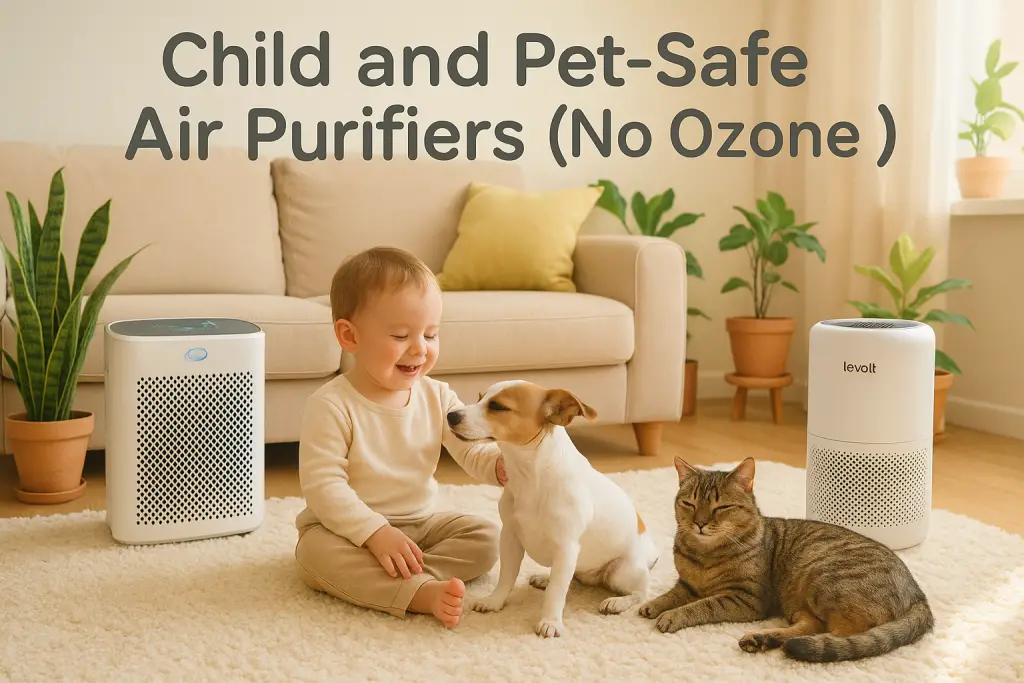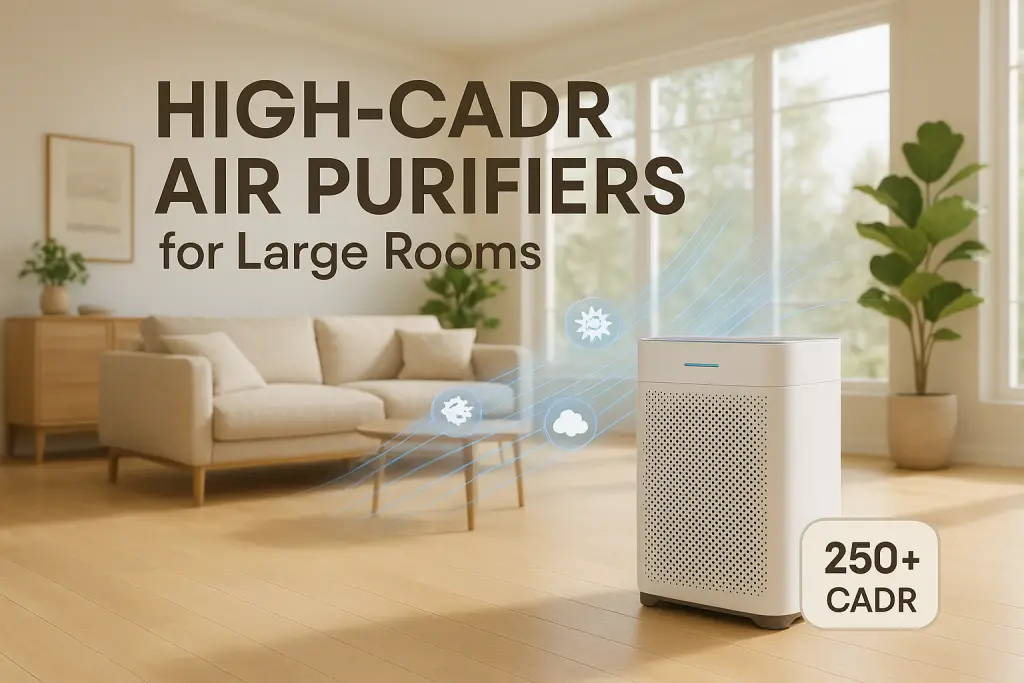Clean Air Delivery Rate (CADR) is a standardized measurement that shows how effectively an air purifier filters specific particles from your room. Understanding CADR helps you choose an air purifier that’s powerful enough for your space. This guide walks you through what CADR means and provides 7 practical steps to use this rating when selecting the right air purifier model.
Understanding CADR: The Fundamental Definition
Clean Air Delivery Rate (CADR) is a standardized measurement that indicates how quickly an air purifier can filter specific airborne particles from a room. This rating is measured in cubic feet per minute (CFM) and tells you the volume of filtered air an air purifier delivers.
CADR ratings measure three different pollutants:
- Dust (particles 0.5-3 microns)
- Pollen (particles 5-11 microns)
- Smoke (particles 0.1-1 microns)
The Association of Home Appliance Manufacturers (AHAM) conducts the testing and certification. A higher CADR number means the air purifier cleans air faster and can handle larger rooms. For example, a CADR rating of 200 for dust means the unit can deliver 200 cubic feet of dust-free air per minute.
Every AHAM-certified air purifier displays a standardized label showing the three CADR ratings and the maximum room size recommendation based on these ratings.
How CADR Ratings Are Measured and Tested
CADR ratings aren’t random numbers—they come from a specific testing protocol conducted by AHAM. Understanding this testing process helps you interpret what these ratings mean for your home.
AHAM tests air purifiers in a controlled chamber measuring 1,008 cubic feet (about the size of a small bedroom). Testers introduce specific contaminants into the chamber and measure how quickly the air purifier removes them. The testing typically runs for 20 minutes at the unit’s highest speed setting.
CADR ratings typically range from 0 to 450 CFM, with most home models falling between 100 and 300 CFM. It’s important to note that manufacturers voluntarily submit their products for testing, and some air purifier CADR claims may need verification at home if they seem unusually high compared to similar models.
Step 1: Determine the Square Footage of Your Space
The first step in using CADR ratings effectively is knowing exactly how much space you need to purify. Here’s how to accurately measure your room:
- Measure the length and width of your room in feet
- Multiply these numbers to get the square footage (Length × Width = Square Footage)
- For a 12′ × 15′ bedroom: 12 × 15 = 180 square feet
For open floor plans or connected spaces, measure the entire area where air flows freely. Standard CADR calculations assume 8-foot ceilings. If your ceilings are higher, you’ll need a proportionally higher CADR rating. For example, with 10-foot ceilings, multiply your square footage by 1.25 to adjust your space calculation.
For irregular-shaped rooms, break the area into rectangles, calculate each section, and add them together for total square footage.
Step 2: Calculate the Minimum CADR Rating You Need
Now that you know your room’s square footage, you can calculate the minimum CADR rating needed for effective air purification. The standard formula is:
Minimum CADR = Room Area (sq ft) ÷ 1.55
This formula is based on achieving 4.8 air changes per hour, which AHAM considers effective for normal residential use. Let’s look at some examples:
- Small room (100 sq ft): Minimum CADR = 100 ÷ 1.55 = 65
- Medium room (225 sq ft): Minimum CADR = 225 ÷ 1.55 = 145
- Large room (400 sq ft): Minimum CADR = 400 ÷ 1.55 = 258
It’s best to choose an air purifier with a CADR rating slightly higher than your calculated minimum. This provides extra cleaning power when needed and allows you to run the unit at lower, quieter speeds while still maintaining good air quality.
If you have severe allergies, live in an area with high pollution, or have other specific air quality concerns, consider getting a unit with a CADR rating 1.5 times your calculated minimum.
Step 3: Prioritize the Right Pollutant CADR for Your Needs
Air purifiers have separate CADR ratings for dust, pollen, and smoke. Understanding which pollutants are most concerning for your situation will help you prioritize the right CADR measurements when comparing models.
Here’s a guide for specific scenarios:
- Allergy sufferers: Focus on pollen CADR (especially during spring and fall)
- Asthma concerns: Prioritize both dust and pollen CADR
- Urban environments: Look for high smoke CADR to handle vehicle emissions and industrial pollutants
- Wildfire-prone areas: Smoke CADR is critical for removing fine particles
- Pet owners: Focus on dust CADR, which includes pet dander
Typically, smoke CADR ratings are lower than dust and pollen ratings because smoke particles are smaller and harder to filter. Some premium models may only list one overall CADR rating rather than breaking it down by pollutant type.
If you have multiple air quality concerns, prioritize the smoke CADR rating as it represents the unit’s ability to filter the smallest particles, which are often the most harmful.
Step 4: Understand CADR Limitations and Additional Factors
While CADR is a valuable metric for comparing air purifiers, it has certain limitations you should be aware of. Understanding what CADR doesn’t measure will help you make a more informed decision.
CADR testing doesn’t account for:
- Filtration of gases, odors, or VOCs (volatile organic compounds)
- Noise levels at different speeds
- Energy efficiency or operating costs
- Filter lifespan or replacement costs
- Effectiveness against viruses or bacteria
- Smart features or adaptive purification capabilities
CADR tests run units at their highest speed, which isn’t typical for everyday use due to noise levels. Some premium manufacturers may de-emphasize CADR ratings because their technologies (like certain photocatalytic or PCO systems) work through different mechanisms than those measured in standard CADR tests.
Many high-quality air purifiers include pre-filters to capture larger particles before they reach the main filter, which can extend filter life but might not directly impact CADR ratings.
Step 5: Compare Air Purifier Models Using CADR Ratings
Now that you understand CADR and its limitations, let’s look at how to effectively compare different air purifier models. Here’s a practical approach to evaluating CADR ratings alongside other important factors.
When comparing models, create a simple table with these columns:
- Model name
- Dust/Pollen/Smoke CADR
- Recommended room size
- Filter type
- Noise level (dB)
- Energy usage (watts)
- Price
Look for good value by comparing the CADR-to-price ratio. For example, if Model A costs $200 with a dust CADR of 200 and Model B costs $300 with a dust CADR of 220, Model A offers better value (1 CADR point per dollar vs. 0.73 CADR points per dollar).
When choosing between models with similar CADR ratings, consider secondary factors like noise levels, filter replacement costs, energy efficiency, and additional features like air quality sensors.
Reliable brands known for accurate CADR ratings include Coway, Blueair, Honeywell, and Levoit. These manufacturers typically provide complete testing information and don’t make exaggerated claims.
Step 6: Consider Real-World Performance Factors Beyond CADR
CADR ratings are measured under laboratory conditions, which may not perfectly reflect your real-world environment. Here are important supplementary factors to consider alongside CADR for optimal air purification.
Air changes per hour (ACH) indicates how many times the air purifier can filter all the air in your room each hour. For most homes, 4-6 ACH is recommended, but people with allergies or asthma may want 6-8 ACH.
Fan speed settings affect actual CADR performance. While ratings are based on maximum speed, you’ll likely run your purifier at lower speeds for quieter operation. Most units deliver about 50-70% of their maximum CADR at medium speed.
Proper placement dramatically affects performance. Place your air purifier where airflow isn’t blocked, avoiding corners and furniture. For best results, position it in the area where you spend most time.
Regular filter maintenance is crucial for maintaining rated CADR. As filters collect particles, airflow decreases, reducing effectiveness. Follow the manufacturer’s recommended replacement schedule.
Using an air quality monitor can help verify that your purifier is performing effectively in your specific environment.
Step 7: Make Your Final Selection Based on CADR and Complementary Features
With all the information about CADR and supplementary factors in hand, you’re ready to make your final air purifier selection. Here’s a decision framework that balances CADR ratings with other essential considerations.
Use this checklist to evaluate your options:
- Does the air purifier have appropriate CADR ratings for your room size?
- Does it target the specific pollutants that concern you most?
- Is the noise level acceptable at the speed you’ll typically use?
- Are the energy consumption and operating costs reasonable for your budget?
- How much do replacement filters cost and how often are they needed?
- Does it include useful additional features like air quality sensors?
- Is auto mode functionality important for your usage pattern?
When deciding between higher CADR versus other features, consider your primary needs. If you have severe allergies or respiratory issues, prioritize cleaning power (CADR). If you’ll use the purifier while sleeping or working, noise level might be more important. For continuous operation, energy efficiency and Energy Star certification could be your priority.
For tight budgets, focus on getting adequate CADR for your space with basic functionality. For mid-range budgets, look for a balance of good CADR ratings and useful features like programmable timers. With premium budgets, seek high CADR plus advanced features like smart home integration and detailed air quality feedback.
Frequently Asked Questions About CADR Ratings
Is a higher CADR rating always better?
Higher CADR is better for cleaning power, but it often comes with increased noise, energy consumption, and cost. Choose a CADR appropriate for your room size rather than automatically seeking the highest rating.
Why do some premium brands not emphasize CADR?
Some high-end air purifiers use technologies that excel at continuous, long-term filtration or target specific pollutants not measured in CADR tests. These might perform excellently in real-world conditions despite modest CADR ratings.
How does CADR differ from MERV or HEPA ratings?
MERV and HEPA ratings measure filter efficiency (what percentage of particles they capture), while CADR measures actual clean air output (volume of filtered air delivered per minute).
Can I use multiple smaller units instead of one high-CADR unit?
Yes, multiple smaller units can be effective, especially in multi-room homes. Two units with CADR 100 will clean about the same air volume as one unit with CADR 200, but with better distribution throughout your space.
Do air purifiers maintain their CADR rating over time?
No, CADR decreases as filters collect particles and become clogged. Regular filter replacement according to manufacturer guidelines helps maintain performance closer to the rated CADR.
Do higher CADR ratings mean more noise or energy use?
Generally yes. Higher CADR ratings typically require more powerful fans, which tend to produce more noise and use more electricity. This is why many users run their purifiers below maximum speed for daily use.
What CADR do I need for specific concerns like allergies or asthma?
For allergies or asthma, calculate your minimum CADR as described in Step 2, then multiply by 1.5 for extra cleaning power. Also prioritize the pollutant CADR that matches your specific triggers (typically dust and pollen).
Are international CADR standards different from US standards?
Yes, some countries use different testing methods. China’s standard tests for formaldehyde removal and uses CADR in m³/h rather than CFM. Japan’s standard focuses on different particle sizes. When comparing, ensure you’re looking at ratings from the same testing standard.
| Photo | Air Purifier Model | Best for | Price |
|---|---|---|---|

|
WINIX A231 Air Purifier | Asthma & Indoor Pollution | Check Price On Amazon |

|
Rabbit Air, A3 SPA-1000N Air Purifier | Pet Dander & Odors | Check Price On Amazon |

|
LEVOIT Air Purifier | Best Overall | Check Price On Amazon |

|
GermGuardian Air Purifier | Cigarette & Cooking Smoke | Check Price On Amazon |

|
Coway Airmega Air Purifier | New-borns | Check Price On Amazon |

|
BLUEAIR Air Purifier | Germ & Virus Control | Check Price On Amazon |
